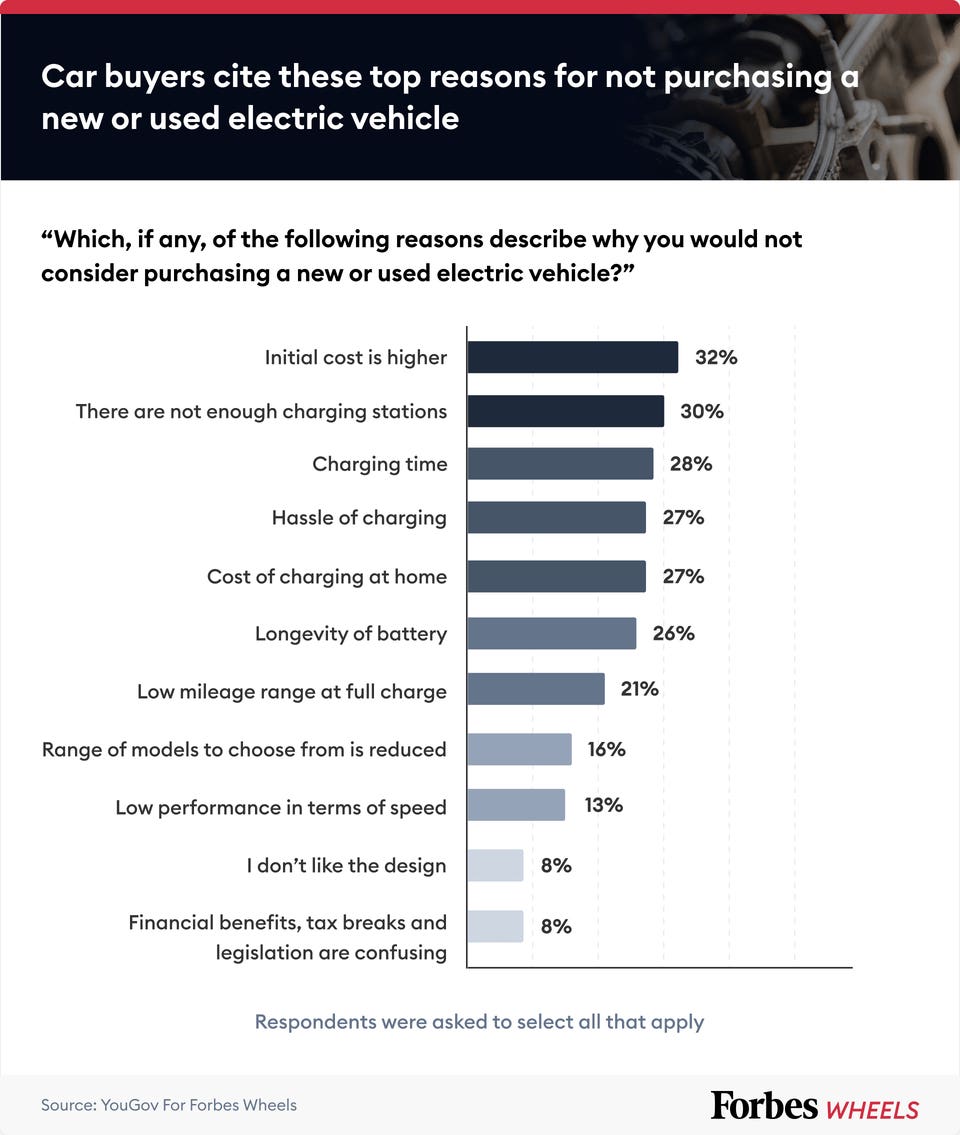Increased Resistance From Car Dealers To EV Sales Quotas

Table of Contents
Financial Concerns and Investment Barriers
One of the primary reasons for car dealer resistance to EV sales quotas is the substantial financial burden associated with adapting their businesses. Dealerships face significant upfront investments to accommodate EVs, impacting dealership profitability. These investments include several key areas:
-
High initial investment in charging infrastructure: Installing Level 2 and DC fast charging stations requires considerable capital expenditure, especially for larger dealerships. The cost of land acquisition, installation, and ongoing maintenance adds up significantly.
-
Costs associated with specialized EV technician training: EVs require specialized knowledge and tools for maintenance and repair, different from traditional internal combustion engine (ICE) vehicles. Training existing technicians and hiring new, specialized staff incurs substantial costs.
-
Lower profit margins on EVs compared to ICE vehicles: Currently, profit margins on EVs are often lower than on gasoline-powered vehicles. This is due to a combination of factors, including higher manufacturing costs and increased competition. This directly impacts dealership revenue.
-
Concerns about inventory management for EVs: Managing EV inventory presents unique challenges. Battery technology is constantly evolving, requiring dealers to carefully consider which models to stock and how to manage potential obsolescence.
-
Lack of government support or insufficient incentives for dealer investment: The absence of adequate government support and incentives for dealers to invest in EV infrastructure and training is a major impediment to smooth transition. Many dealers feel the burden of adaptation falls solely on their shoulders.
Lack of Consumer Demand and Market Readiness
Dealers also argue that insufficient consumer demand and market readiness contribute to their resistance. While EV adoption is increasing, several hurdles remain:
-
Concerns about limited driving range of current EVs: Range anxiety, the fear of running out of battery charge, is a significant deterrent for potential EV buyers. Improvements in battery technology are addressing this concern, but it remains a factor.
-
Inadequate public charging infrastructure in many regions: The lack of widespread, reliable public charging stations, especially in rural areas, discourages EV adoption. This reinforces range anxiety and hinders consumer confidence.
-
High initial cost of EVs compared to gasoline-powered vehicles: The higher upfront cost of EVs compared to equivalent gasoline cars remains a barrier to entry for many consumers. Government incentives can mitigate this, but they are not always sufficient.
-
Consumer misconceptions and lack of awareness about EV benefits: Many consumers still harbor misconceptions about EVs, including charging times, maintenance costs, and overall practicality. Increased consumer education is needed.
-
Slow consumer adoption rate compared to governmental targets: The pace of consumer adoption is often slower than government-mandated EV sales quotas, putting pressure on dealerships to meet targets they perceive as unrealistic.
Challenges in Sales and Service Processes
Adapting sales and service processes to accommodate EVs presents unique logistical challenges for dealerships:
-
Need for specialized training for service personnel: Servicing EVs requires specialized knowledge and training, going beyond the skills needed for ICE vehicles.
-
Investment in specialized diagnostic tools and equipment: Dealerships need to invest in specialized tools and equipment to diagnose and repair EV components, significantly adding to their costs.
-
Complexities of EV battery repair and replacement: EV battery repair and replacement are complex and expensive procedures, requiring specialized expertise and potentially lengthy downtime for vehicles.
-
Managing warranty claims related to EV batteries and components: Managing warranty claims for EV batteries and other complex components can be challenging, requiring efficient processes and close collaboration with manufacturers.
-
Adapting dealer networks to support EV service needs: Existing dealer networks may not be optimally structured to handle the specific service requirements of EVs. Expansion and adaptation may be necessary.
Potential Solutions and Incentives
Overcoming dealer resistance requires a multi-pronged approach involving government incentives and industry collaboration:
-
Government subsidies and tax credits for dealerships investing in EV infrastructure: Financial incentives can significantly alleviate the financial burden of investing in charging infrastructure and training.
-
Comprehensive training programs for technicians on EV maintenance and repair: Government-supported training programs can ensure that technicians possess the necessary skills to service EVs effectively.
-
Financial incentives for dealers exceeding EV sales quotas: Rewarding dealers who exceed their EV sales quotas can encourage greater investment and effort.
-
Public awareness campaigns highlighting the benefits of EVs: Educating consumers about the benefits of EVs, addressing concerns, and promoting their adoption is crucial.
-
Collaborative partnerships between manufacturers, dealers, and government agencies: Open communication and collaboration among all stakeholders are essential to develop effective solutions.
Conclusion
The increased resistance from car dealers to EV sales quotas stems from a combination of financial concerns, market readiness issues, and logistical challenges in adapting their operations. Addressing these concerns through a combination of government incentives, industry collaboration, and comprehensive consumer education is crucial. The successful transition to widespread EV adoption requires a collaborative effort to overcome resistance and ensure a sustainable and efficient automotive industry transformation. Further research into effective strategies for overcoming resistance to EV sales quotas is vital for achieving a greener future for transportation. Let's work together to find solutions that benefit both the automotive industry and the environment.

Featured Posts
-
 Mtv Cribs A Look Inside The Homes Of Wealthy Celebrities
May 11, 2025
Mtv Cribs A Look Inside The Homes Of Wealthy Celebrities
May 11, 2025 -
 Ludogorets Naema Antoan Baroan
May 11, 2025
Ludogorets Naema Antoan Baroan
May 11, 2025 -
 Stevensons Gaze Already On Next Season Ipswich Town News
May 11, 2025
Stevensons Gaze Already On Next Season Ipswich Town News
May 11, 2025 -
 Debunking The Myth How Many Times Did The Real John Wick Appear
May 11, 2025
Debunking The Myth How Many Times Did The Real John Wick Appear
May 11, 2025 -
 Tennessees Late Inning Surge Evens Series Against Lsu
May 11, 2025
Tennessees Late Inning Surge Evens Series Against Lsu
May 11, 2025
